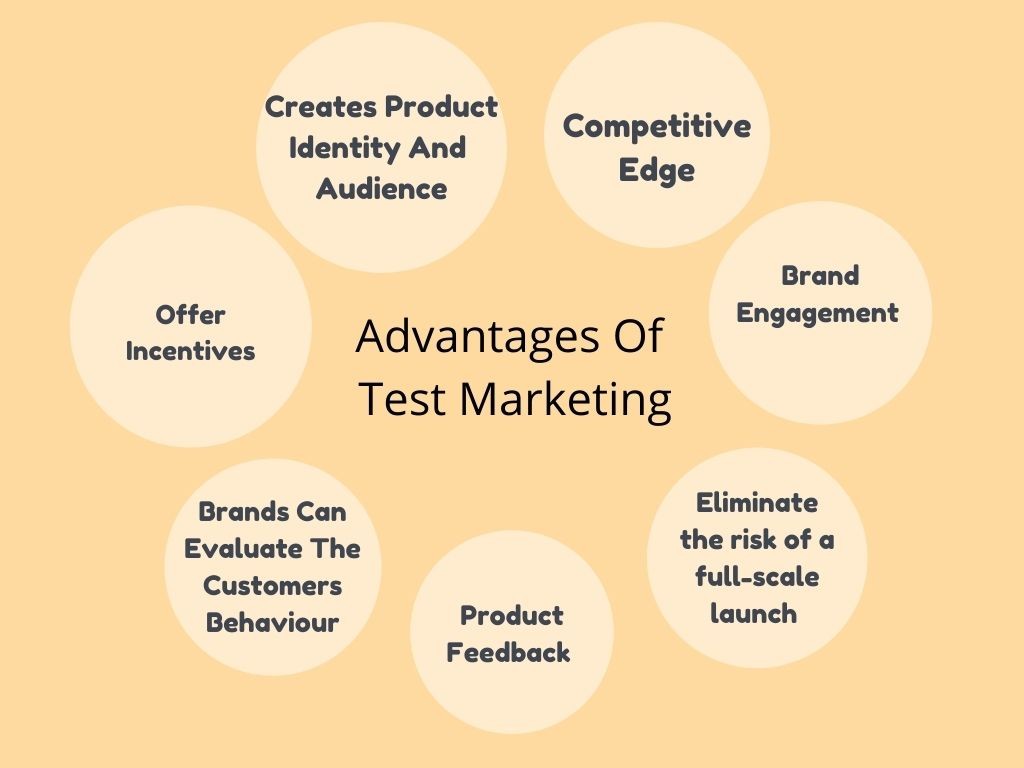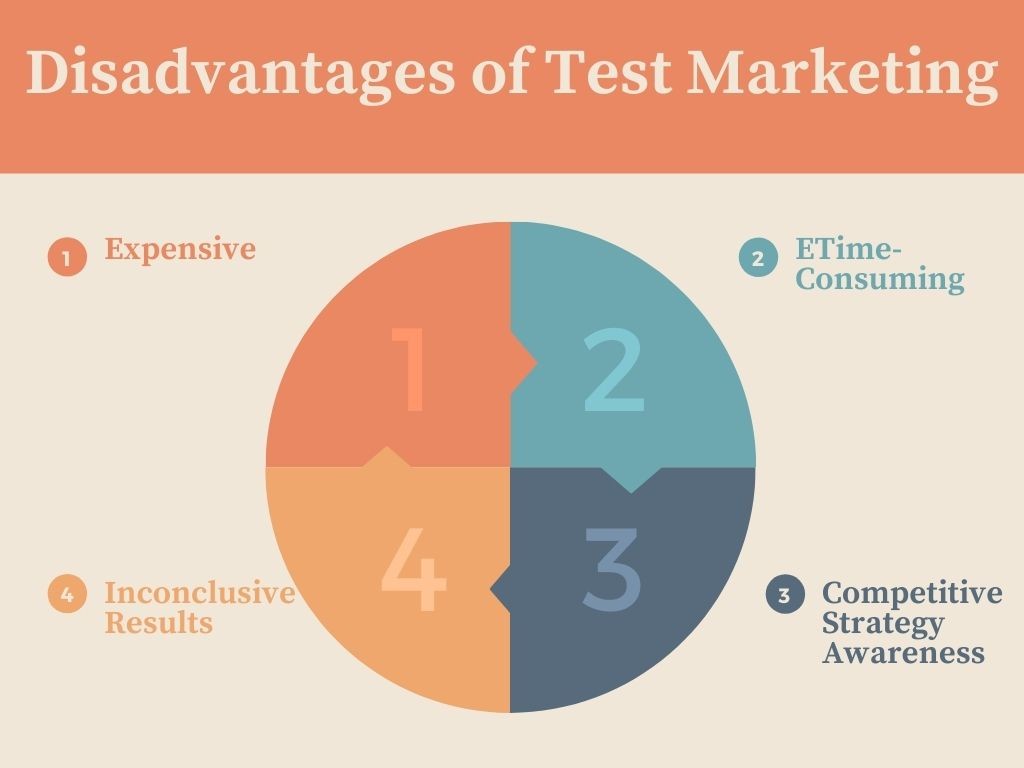Definition Of Market Test
What is test marketing: In the world of advertising and business, a market test can be defined as a short-term geographical area or demographic grouping used to evaluate the profitability of a particular product or service in a specific market before a broad scale roll-out.
What Is Test Marketing
Test marketing is the process of experimenting to explore the consumer response to the product, marketing campaign. Process for test marketing is conducted on small scale only to limited people. And the people involved in the process might not be aware of the test or experiment.
The market test is conducted in every type of product and market. For instance, in case of software, retail markets and online marketing campaigns a beta testing, few store experiment and programmatic advertisement is done.
What is test marketing, is not only about creating awareness about the product but it is the most useful tool in improving the product. Moreover, the market test is used to build a brand name and customer relations.
Types Of Test Marketing
Market test is one the best tool for marketers to analyse the position of a new product or campaign before launch, to reevaluate organization decisions. Plus these markettest allows the organization to save themselves from future losses.
So, to conduct a market test, an organization need to lay down the objectives and according to those objectives, the organization choose the type of market test. So, let’s understand what is test marketing and what are its different types. Here is the differentiation of market testing.
Consumer Goods Test Marketing 1. Controlled Test Marketing 2. Simulated Test Marketing 3. Standard Test Marketing Industrial Goods Test Marketing 1. Alpha Testing 2. Beta Testing
In this blog of what is test marketing, we will only focus on the consumer goods market testing.
Consumer Goods Test Marketing
The very first differentiation is done in understanding what is test marketing is based on the product and its industry. The first differentiation is based on the product, whether the product is in consumer goods or industrial products.
Afterwards, the second distribution is based on the type of market test an organization is desired to conduct. Here are the different types of test marketing.
1. Controlled Test Marketing
The controlled market test is an inexpensive and valuable method to spread awareness about the new product. Additional features, packaging changes, changes in price or promotion etc. Similarly, these market test are designed to provide insightful information to the organization in order to make the most suitable decisions. Including the consumer reactions to new products or features or new advertisement program.
For example Controlled test markets mostly take place in retail stores for consumer products like soaps or shampoos. A new or free sample is kept on catchy display, self to get consumers attention.
Here is the process for controlled test marketing to understand what is test marketing and how it is conducted by an organization.
- Step 1: An organization selects the stores based on selected geographical location and ask them to sell the product for free.
- Step 2: Selected stores are divided into two panels: test and control. These panel stores are matched based on in-market variables such as sales, demographic/location and size of the store.
- Step 3: In stores designated as test panel, changes are usually made concerning pricing, product location, POS (point of sale), and in most cases the addition of new items or packaging. Within stores classified as control, no changes are made so that normal market conditions remain intact.
Difference between controlled market test and controlled store test is multiple stores are used in one or multiple cities and only store from the single retail chain is selected respectively.
2. Simulated Test Marketing
A simulated tet marketing is an example of a laboratory experiment. Such market test is conducted with the supervision and in a controlled form. As all the aspects of an experiment are pre-defined. The reason for picking up the preferred competitors reference. So, the predefined customers were asked to select the product from the given number of products.
The reason for Simulated test marketing is understanding the customer’s reasons and behaviour while picking up the product.

For Instance, customers have given a set amount of money and specific ads are shown to all the selected customers and asked them to purchase from given options.
Here is the process for stimulated test marketing which the organization set up for test and evaluation for a better understanding of what is test marketing.
- Step1: Simulated test markets typically adopt one of two approaches to forecast sales: purchase intent and/or preference. Purchase intent gauges respondents’ likelihood of purchase. And, in the preferred approach, participants purchase a product from a competitive set that includes the new product.
- Step2: Afterwards, the organization conducts an interview called a concept stage which yields information on the product’s appeal and trial rate.
- Step3: Later on customers were asked to choose a product on a shelf with competitors product in case of preference approach.
- Step 4: In last in order to determine the consumer’s experience, a short interview or telephone call conducts.
And, nowhere is the last differentiation in what is test marketing to understand different types of market test.
3. Standard Test Marketing
Standard test marketing is like a normal market campaign. This test marketing is widely popular before a new product launch. Plus the standard test marketing provides the real-world performance of the product.

For Example, Hindustan Liver’s Lipton Iced Tea, Kinley, Coca-Cola, Sunfill, Johnson, Nizoral anti-dandruff shampoo all faced the standard test marketing in Hyderabad.
Here is the next process in what is test marketing of standard test marketing which the organization set up for evaluation.
- Step 1: The very first step is to select few cities are selected to conduct the test market which represents the national markets.
- Step 2: Afterwards, the company distributes the product to retailers, wholesalers and perform every marketing mix variable to make the sale. Like, price control marketing, advertising strategy etc.
- Step 3: As a result, sales, customer feedback, the reaction is analyzed to make a comparison to the national campaign to make an informed decision about the product.
So, now for further elaboration of what is test marketing here are the advantages and disadvantages.
Advantages Test Marketing
Market testing is one of the essential tools for an organization in order to gain the customer perspective, predict future sales and a lot more. So let’s understand what is test marketing and what are the advantages of the test market.

Creates Product Identity And Audience
A market test of any product gives the space and time to build its own space and audience. As, distribution, advertisement of a product creates awareness and familiarity in public. Over time a great product will sell itself. Later on when customers start to rely on and get used to the product and they will willing to pay for the product.
Competitive Edge
Conducting a market test, test campaigns are not a popular tool in a lot of industries. So, providing free samples or analysing the audience perspective before launching a new product can give an organization a competitive edge.
On the other hand, industries always offering free products makes the customers expect free products, so not offering a free product can have a negative image of the organization.
Brand Engagement
Another thing that is most required by the organization is the engagement of the brand and customers. While money is considered the most important thing, but when the customer takes their time to use a product they build a relationship with the company. As result, it creates customer towards the band.
Product Feedback
One of the basic purpose and the idea behind the market test is to know about customer feedbacks regarding the product. In order to improve the product, its features, engagement organization mostly relies on customer feedback.
Over time organization refines the product into customer taste and preferences because consumers are unpredictable they can use the product in such a way which brand would have never imagined.
Offer Incentives
Market testing gives opportunities to a brand to establish its advertisement campaigns. As the company is analysing the customer reactions, customers who are on the fence about buying the product can be lured with incentives.
Plus, the company can create different incentives based on the customer’s reaction and their behaviour.
Brands Can Evaluate The Customers Behaviour
It is important for an organization to know how their customer’s behaviour towards the brand. For instance, there are customers with only intended for a trial product. On the other hand, there are customers who prefer to buy products with a small trial. This process allows brands to score leads better, create stronger follow-ups, and grow their inbound marketing opportunities.
The risk of a full-scale launch eliminated
Huge costs can be saved on branding, manufacturing, and marketing if the product doesn’t pass the test. The pitfalls found during the test launch can be rectified by the brand. Changes can be made based on the feedback and data collected from the test sample. If there is a defect or a problem in the product, immediate recalls can be done from the test. Recalling the product from the test audience is much better than launching a product to the whole market and then recalling it or understanding what is wrong with the product. This saves the reputation of the brand too along with saving on money.
So, these were the basic advantages to understand what is test marketing. And now there are some disadvantages to understanding what is test marketing.
Disadvantages Of Market Test
Market testing has its own many advantages and popularity but organizations are very well aware of the certain disadvantages which are involved with market tests of a product or an advertising campaigns. So, let’s understand what is test marketing and what are the things which create market test a disadvantage.

Expensive
One of the basic and major drawbacks of test marketing is the cost of creating and conducting the test. In beginning, an organization uses focus groups to test their product which cost thousands of dollars. Afterwards when the organization creates a market test for the beta version of the product under normal market conditions. Which includes the cost of product development, shipping, packing, advertising etc. As a result, it creates a huge cost for a company.
Time-Consuming
Besides expensive, it is also one of the most time-consuming processes. Creating a setup including product, price, promotion and supply chain management takes a lot of time and resources. So, it is important to analyse the cost and profit with the time duration of test marketing.
Note: the time period for the market test depends upon the organization it can go from 6 months to 2 years as well.
Competitive Strategy Awareness
Companies keep the process of new product launch very decreet. As the risk of a rival firm taking over can create a huge loss for the company. So, conducting the market testing, distributing samples or incentives gives the idea of new product or new features or marketing strategy to a competitive brand. As a result, an organization can lose the competitive edge.
Inconclusive Results
Small companies that use test marketing cannot always predict success. Products that sell locally or in several markets might not sell well in other geographical areas. Consumers could be loyal to certain brands in other parts of the country. Hence, results from market test are not necessarily projectable. Sometimes, companies just need to roll their products out to see how they do.
So these are all the things to understand what is test marketing and how it works in the real world.